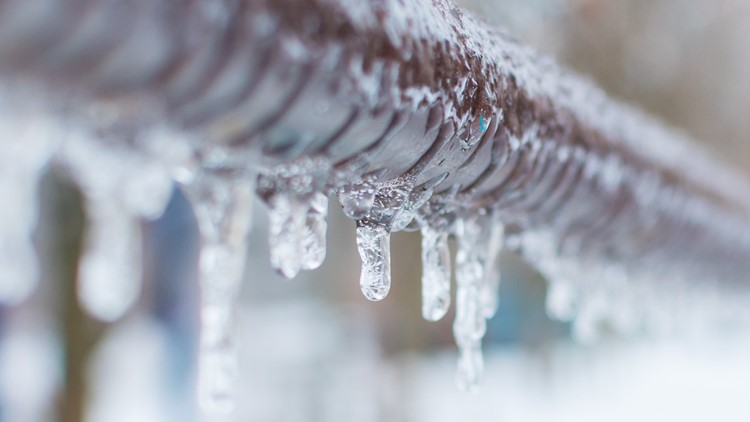We've discovered this great article about Helpful Tips to Prevent Frozen Pipes this Winter directly below on the internet and thought it made sense to discuss it with you here.

Cold weather can ruin your pipes, especially by freezing pipes. Here's exactly how to avoid it from happening and what to do if it does.
Intro
As temperatures decline, the risk of icy pipes rises, possibly resulting in pricey repair work and water damages. Understanding exactly how to stop frozen pipes is critical for property owners in cool environments.
Understanding Frozen Pipelines
What creates pipelines to ice up?
Pipes freeze when exposed to temperature levels listed below 32 ° F (0 ° C) for extended periods. As water inside the pipes freezes, it expands, taxing the pipe walls and possibly creating them to rupture.
Risks and damages
Icy pipelines can cause water disturbances, residential property damage, and pricey repair services. Burst pipes can flood homes and trigger substantial structural damages.
Indicators of Frozen Pipeline
Determining frozen pipes early can stop them from breaking.
How to determine frozen pipelines
Search for lowered water flow from taps, unusual smells or sounds from pipes, and visible frost on exposed pipelines.
Prevention Tips
Protecting vulnerable pipelines
Wrap pipelines in insulation sleeves or make use of heat tape to secure them from freezing temperature levels. Focus on pipes in unheated or external locations of the home.
Heating methods
Keep interior areas sufficiently warmed, specifically areas with plumbing. Open cupboard doors to enable cozy air to distribute around pipelines under sinks.
Shielding Exterior Pipes
Yard hoses and outdoor faucets
Separate and drain yard hose pipes before winter months. Set up frost-proof faucets or cover outside taps with insulated caps.
What to Do If Your Pipelines Freeze
Immediate activities to take
If you suspect frozen pipelines, keep taps open up to soothe pressure as the ice melts. Use a hairdryer or towels taken in hot water to thaw pipes slowly.
Long-Term Solutions
Structural modifications
Think about rerouting pipelines away from exterior walls or unheated locations. Add added insulation to attics, basements, and crawl spaces.
Updating insulation
Purchase top quality insulation for pipes, attic rooms, and wall surfaces. Correct insulation helps keep regular temperature levels and lowers the threat of frozen pipes.
Conclusion
Preventing icy pipelines calls for aggressive procedures and quick responses. By understanding the reasons, indications, and preventive measures, house owners can safeguard their pipes throughout cold weather.
6 Proven Ways to Prevent Frozen Pipes and Protect Your Home
Disconnect and Drain Garden Hoses
Before winter arrives, start by disconnecting your garden hoses and draining any remaining water. Close the shut-off valves that supply outdoor hose bibs and leave the outdoor faucet open to allow any residual water to drain. For extra protection, consider using faucet covers throughout the colder months. It’s also important to drain water from any sprinkler supply lines following the manufacturer’s directions.
Insulate Exposed Pipes
Insulating your pipes is an effective way to prevent freezing. Pipe insulation is readily available at home improvement stores and is relatively inexpensive. Pay close attention to pipes in unheated areas such as the attic, basement, crawl spaces, or garage. Apply foam insulation generously to create a buffer against the cold. You can also wrap your pipes in heat tape or thermostat-controlled heat cables for added warmth.
Seal Air Leaks
Inspect your home for any cracks or openings that could let in cold air. Seal any holes around the piping in interior or exterior walls, as well as the sill plates where your home rests on its foundation. Additionally, make sure to keep your garage door closed unless you’re entering or exiting. Leaving it open creates a significant air leak that can lead to frozen pipes.
Allow Warm Air Circulation
During cold snaps, it’s essential to allow warm air to circulate evenly throughout your home. Leave interior doors ajar to promote better airflow. Open kitchen and bathroom cabinets to help distribute heat consistently around the rooms. If you have small children or pets, be sure to remove any household chemicals or potentially harmful cleaners from open cabinets for safety.
Let Faucets Drip
A small trickle of water can make a big difference in preventing ice formation inside your pipes. When temperatures drop significantly, start a drip of water from all faucets served by exposed pipes. This continuous flow helps prevent the water from freezing. Additionally, running a few faucets slightly can relieve pressure inside the pipes, reducing the chances of a rupture if the water inside does freeze.
https://choateshvac.com/6-proven-ways-to-prevent-frozen-pipes-and-protect-your-home/

I hope you enjoyed our part on 6 Ways to Prevent Frozen Pipes. Thanks a ton for taking a few minutes to read our piece. Sharing is caring. Helping others is fun. Thanks a bunch for being here. Come back soon.
Services